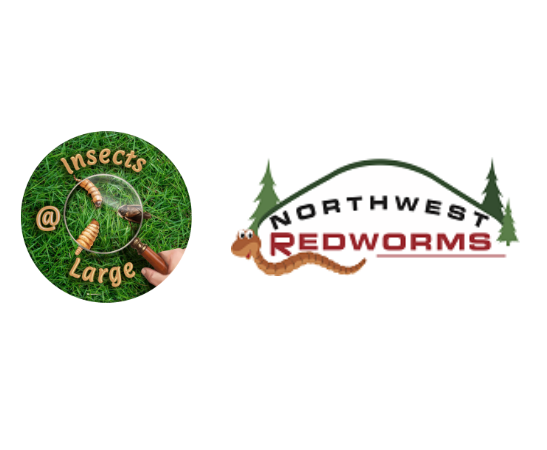Getting Started
Before you get your red worms:
Monitor how much food or other organic waste that you would normally throw away, then divide the weight (lbs) of one week of waste by 3.5 (this is the amount 1 lb of redworms will eat in a week). This is the amount of redworms you can start with. You can always start with less redworms and they will catch up to the amount of food you give them. Note: your compost should be 1/2 waste and 1/2 bedding (shredded newspaper, composted leaves or sawdust - I prefer composted leaves). Bedding is not food to your redworms at least not at first, it is to keep your compost fluffy and able to hold air. It is also good to cover your waste to reduce fruit flies and to insulate in cold weather. Overfeeding is not the problem in most composts, it's not putting enough bedding with the food. As a result most beginners will either lose some or all their redworms due to the excess moisture (not enough bedding) becoming anaerobic or due to the lack of food in fear of over feeding. Don’t let that scare you, just remember it’s all about layers (do not mix your compost).
Decide on the redworm compost bin that you would like to use. Wood, plastic or any combination of the two, there are advantages to both and the main purpose for a bin is to keep your compost neat and tidy and to protect your redworms from predators (ie: moles).
Start saving your food waste so it can break down a little before your feed it to them. Redworms will not chew up your apples until the skin gets soft and it's the same for most foods. Redworms are secondary eaters, they will eat after bacteria, mold or some other bug has softened the waste.
Ordering your red worms:
Beware of inexpensive redworms labeled as soil with redworms. These vendors often advertise 1,000 redworms and eggs in 1 lb of soil, this does not always mean you are getting "1 lb of redworms". A pound of pure redworms is equivalent to 2 cups in volume.
Setting up your bin:
Put one sheet of newspaper on the bottom of the bin to keep your redworms from wandering out when they are first put in. If you have some compost starter (composted leaf mulch) you can put that in now, if not put in a layer of bedding (about 2"). Now put in the food and another layer of bedding.
Note: if you have a horizontal migration bin (like our cedar worm bins) with 2 or more sections you will only set up one section for the worms. The remaining sections are for holding moist bedding only, initially. As you feed the section with worms you can use the bedding in the holding sections as the cover for your produce as you feed. It will also serve as a safety area also for the worms to go to if the feeding side is overfed or heats up between feedings. As the feeding bin gets full and the bedding section empties you can start to feed the bedding section. At the same time you will stop feeding the first section to let it finish. the worms will be attracted to the food in the new section once theirs is gone.
You have your bin, you've added your bedding and food waste. Now you are ready to add your redworms and as I mentioned earlier you may need to house break them. It is likely that your waste does not taste the same as what they were eating before, so they may want to wander. Most beginners think right away there is something wrong with the bin, food, or moisture. Most likely it's just the new home, so you need to house break them by putting a light above your compost. Redworms do not like the light so they are more likely to stay in the bin. It may take a few days for your redworms to forget their old home, give or take a day or two.
Now it's time to be patient, let your redworms eat, lay egg cocoons and eat some more. Now it's time to think about what you are going to do with your redworm castings (this is the black gold fertilizer that your redworms will reward you with for feeding them well).
806 NE 202nd Ave, Camas, WA, 98607 . 360-513-7251 . doug@northwestredworms.com
